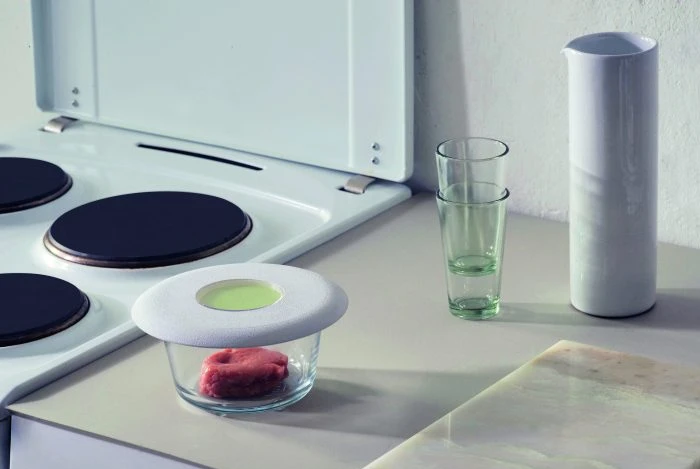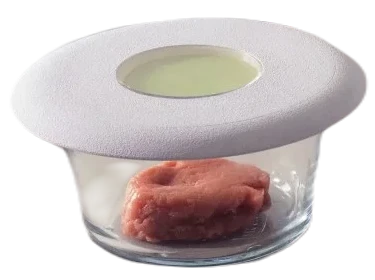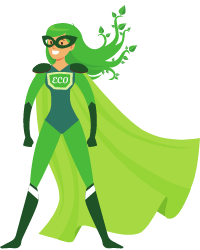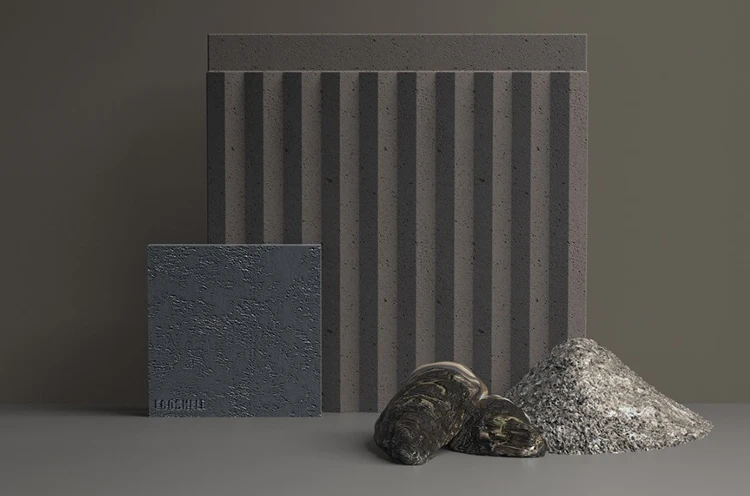Spoiled food isn’t exciting. It isn’t fun to read about or discuss, and the very act of covering your leftovers is boring. But, food waste adds up and matters, especially when some of that food didn’t need to be wasted.
This is the Vorkoster Lid, a brainchild of Kimia Amir-Moazami, a graduate from UDK Berlin who had a straightforward idea on how to tackle the global issue of food waste.
First off, let’s shatter a common myth: expiration dates aren’t always the final word on food freshness.
We’ve all been there, discarding food just because the date on the packet says it’s time. In fact, tossing away perfectly good food because we think, or suspect, it’s expired is a particularly American problem.
According to a MITRE-Gallup survey from November 2023, American households are throwing away 6.2 cups of food per week, mostly contributed to overreliance on date labels. Now, that’s only a portion of the 30-40% of food that is wasted each year in this country. ReFED estimates this waste is costing Americans $310 billion, as otherwise edible food fills up landfills and generates greenhouse gas emissions.
But convincing the average American family of four to stop wasting food has proven difficult. Luckily, the Vorkoster Lid was designed to be both sustainable and simple.
The lid keeps track of the state of your food. Embedded in its core is a pH-sensitive foil that detects when your meat or fish begins to spoil. This foil, crafted from algae and coated in a special dye, changes color – from a serene light green to a vivid purple. It’s like having a traffic light for your food: green for go, purple for stop.

Kimia Amir-Moazami, the brain behind this innovation, was driven by the colossal food wastage due to misleading expiration dates. She realized that these dates don’t always reflect the real condition of the food. Factors like interrupted cooling during transport or production can affect food’s actual shelf life, and the Vorkoster Lid addresses this gap. Its pH-responsive feature reacts directly to the freshness of the food, bypassing the generalized expiration date and offering a more accurate, real-time assessment.
And there’s also the fact that frequently people forget how long their own cooked food has been in the refrigerator, waiting for them. Oftentimes, families will throw away unspoiled food as a precaution. This lid can end that waste as well.
Going beyond the smart foil, Amir-Moazami designed the lid for universal compatibility, fitting snugly over various types of tubs and bowls.
The idea sprouted from a common kitchen practice – covering food with a plate in the fridge.
Amir-Moazami took this simple concept and elevated it, introducing a design that adapts to any bowl or container. The pH-reactive film is the centerpiece of this invention, taking out the guesswork and offering a clear visual cue about your food’s freshness.
First showcased in 2021 at Dutch Design Week, this innovation is slated to hit the markets within two years so hopefully any month now, pending extensive testing to guarantee nearly flawless functionality.

And that’s important because consumers must be able to trust what the lid tells them!
While the pricing details are still under wraps, the potential impact of the Vorkoster Lid is immense for both residential and commercial applications.
How Does It Work?
To understand how this product champions sustainability, let’s peel back its layers.
The Vorkoster Lid is a prime example of green design in action. In order to work, it must actively engage with its environment in real time. Its pH-sensitive foil, derived from algae, is a nod to biodegradable materials and a step away from conventional plastic derivatives. By shifting the focus from expiration dates to real-time freshness indicators, it promotes a more mindful and less wasteful approach to food consumption.
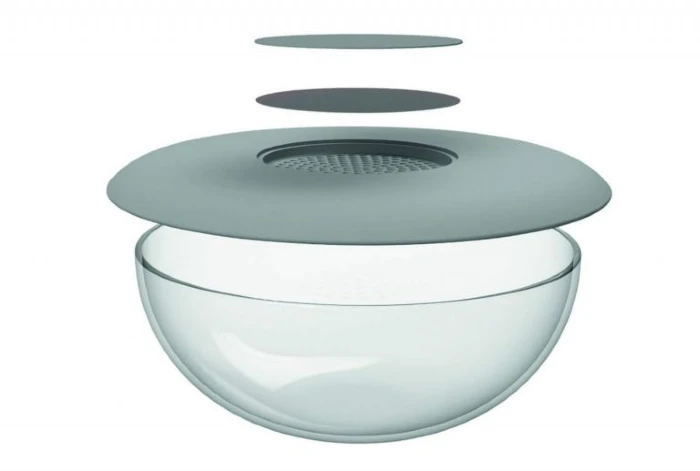
The Lid will be manufactured on demand using 3D-printing technology meaning, an immediate and predictable reduction in manufacturing waste compared to traditional production methods. Essentially, the Lid is a print-on-demand product. No wasted inventory. No wasted space. And no wasted oil in shipping.
And, of course, there’s the use of algae-based materials in the product itself. That ensures a lower carbon footprint in production, aligning with the principles of green manufacturing.
To better understand the potential in this lid, let’s take a quick look at the scale of food waste in the U.S.
Food Waste In The U.S.
In the United States, the issue of food waste isn’t just a minor inconvenience; it’s a colossal problem. More than that, it’s a national embarrassment as many countries have moved to lower food waste, like France which recently mandated composting.
To truly grasp the potential impact of innovations like the Vorkoster Lid, let’s look at the horrifying statistics of food waste in America.
On a personal level, the average American is likely unaware of their contribution to this issue.
Each person in the U.S. wastes approximately 242 pounds of food per year. This isn’t just a matter of a few forgotten fruits or vegetables at the back of the fridge; it’s equivalent to tossing out over 670 average-sized apples annually per individual!
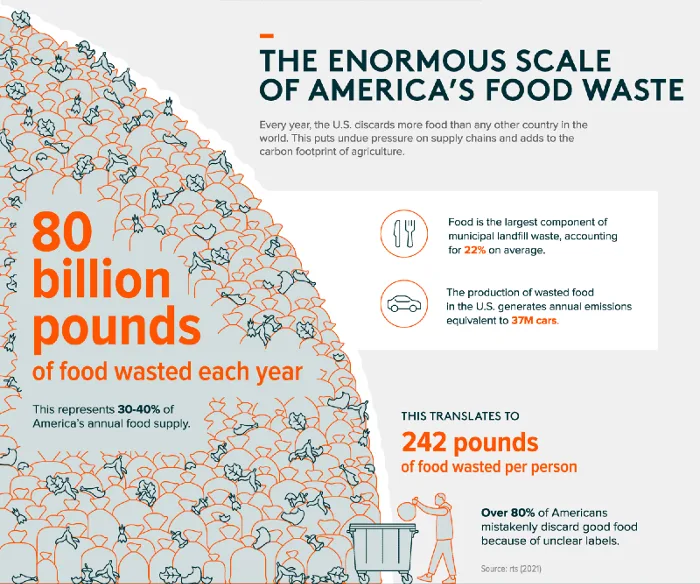
The commercial aspect of food waste is even more alarming.
Supermarkets, restaurants, and other food-related businesses contribute significantly to this issue. Annually, the U.S. commercial sector discards an estimated 85 million tons of food. This staggering amount reflects inefficiencies and losses in the food supply chain, from over-ordering to discarding produce that doesn’t meet aesthetic standards.
Now, envision the impact of the Vorkoster Lid in this scenario.
For households, this innovative lid could dramatically reduce the amount of food thrown away due to uncertainty about its freshness and, according to Gallup, save an American family of four as much as $1,000 a year in food costs.
Now, in a commercial setting, the benefits are equally promising and can potentially save the restaurant owner upwards of $4,000.
Restaurants and supermarkets can use the Vorkoster Lid to monitor the freshness of perishable items more accurately. This could lead to better stock management, reduced over-ordering, and less disposal of food that’s still fit for consumption.
In turn, this could significantly dent the 85 million tons of food wasted annually in the commercial sector.
More To Discover
One thing is for certain, the issue of freshness and food waste must be addressed. Whether it’s through making a strong and concerted effort to stop wasting food or by using a sustainably designed product like the Vorkoster Lid, what matters most is that we all try to do a little better and waste a little less every week.
Meet The Designer: Kimia Amir Moazami
Kimia Amir-Moazami studied product and process design at the Berlin University of the Arts. After which she spent a semester abroad at the Design Academy Eindhoven to deepen her knowledge in design research and experimental design approaches. Currently, Kimia works as a product and UX designer, while also teaching design at the Heinz-Berggruen-Gymnasium in Berlin.







